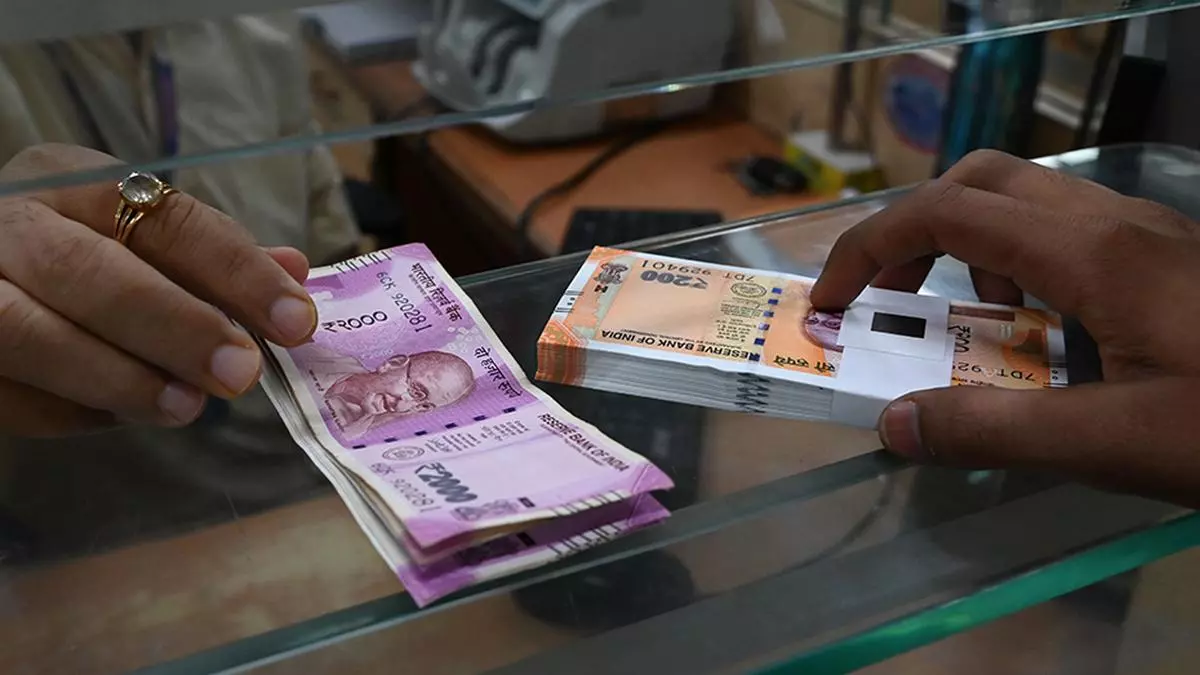RBI draft norms on liquidity standards: Banks’ lendable resources may come down
The Reserve Bank of India may be seeking to indirectly bring down credit growth in the banking system by proposing to prescribe additional run-off factor for deposits enabled with internet and mobile banking (IMB) facility, say experts.
The additional 5 per cent run-off factor proposed for the aforementioned category of deposits could bring down banks’ liquidity coverage ratio (LCR), requiring them to top up high quality liquid assets (HQLAs), mainly by investing more in government securities (G-Secs).
Run-off factor means the possibility of deposits getting withdrawn/ transferred, including in stressed situations.
As part of post global financial crisis (GFC) reforms, the Basel Committee on Banking Supervision (BCBS) had introduced LCR, which requires banks to maintain HQLAs to meet 30 days net outgo under stressed conditions. The RBI has prescribed that banks maintain LCR (HQLAs/ total cash outflows * 100) of at least 100 per cent.
“Due to increase in the run-off factor on deposits with IMB facility, HQLAs have to go up to ensure that LCR stays above the minimum 100 per cent threshold.
“So, when the denominator (expected outflows) increases, the numerator (HQLAs) should also increase. Hence, if a bank has to invest more funds in G-Secs due to this, its lendable funds will come down,” said V Rama Chandra Reddy, Deputy General Manager (Treasury), Karur Vysya Bank.
This could also result in correction in the current high credit-deposit ratio in the banking system. As on June 28, the system level incremental credit-deposit ratio was 101 per cent, per RBI data.
Banking expert V Viswanathan observed that the perceivable cash outflows will go up due to the proposed prescription of higher run-off factor on IMB linked deposits, both stable and less stable.
“So, LCR will come down. Banks with marginally higher LCR may have to either increase HQLAs or reduce loans and advances…Banks with LCR of 100 per cent or thereabouts will be impacted more,” he said.
Liquidity Standards: Draft Guidelines
The RBI, in its “draft guidelines: Basel III Framework on Liquidity Standards – Liquidity Coverage Ratio (LCR) – Review of Haircuts on High Quality Liquid Assets (HQLA) and Run-off Rates on Certain Categories of Deposits” issued on Thursday, said banks shall assign an additional 5 per cent run-off factor for retail deposits enabled with IMB, including and Unified Payments Interface (UPI).
Specifically, stable retail deposits enabled with IMB shall have 10 per cent run-off factor and less stable deposits enabled with IMB shall have 15 per cent run-off factor.
Further, unsecured wholesale funding provided by non-financial small business customers too shall be treated in accordance with the treatment of retail deposits.
In the draft guidelines (applicable to commercial banks excluding payments banks, regional rural banks and local area banks), RBI noted that while increased usage of technology has facilitated the ability to make instantaneous bank transfers and withdrawals, it has also led to a concomitant increase in risks, requiring proactive management.
The central bank said in case a deposit, hitherto excluded from LCR computation (for instance, a non-callable fixed deposit), is contractually pledged as collateral to a bank to secure a credit facility or loan, such deposit shall be treated as callable for LCR purposes.
Further, Level 1 HQLA in the form of government securities shall be valued at an amount not greater than their current market value, adjusted for applicable haircuts in line with the margin requirements under the Liquidity Adjustment Facility (LAF) and Marginal Standing Facility (MSF).
The central bank invited comments on the draft circular from banks and other stakeholders by August 31, 2024. RBI said these instructions on LCR and Run-off rates shall come into force with effect from April 01, 2025.
